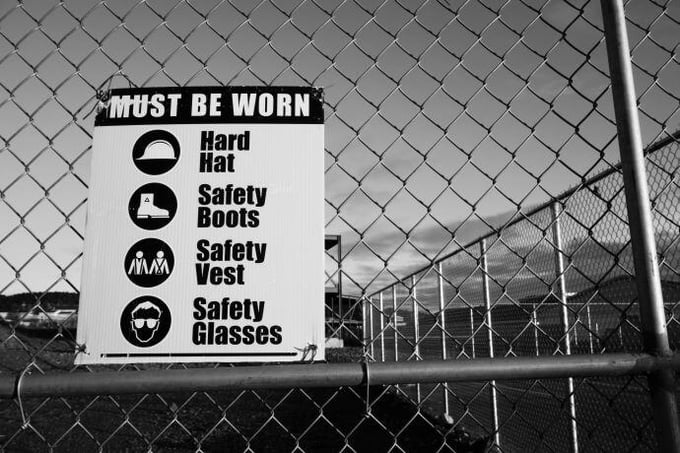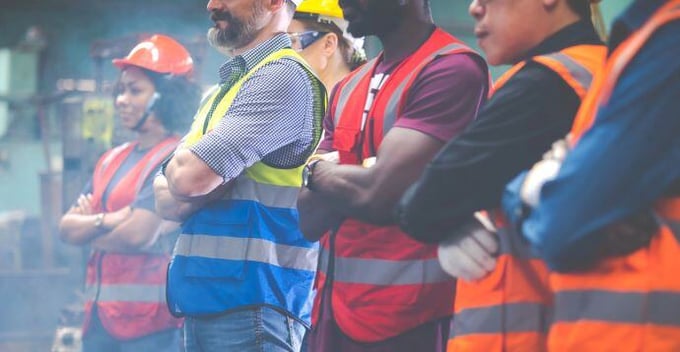According to the Bureau of Labor Statistics, in 2022 5,190 people died while doing their jobs. That’s more than 14 people per day. With the implementation of rigorous safety management protocols, many of these deaths could have been prevented.
Creating a positive safety culture, focused on employee health and wellness, within an organization has been shown to dramatically reduce the rate of injuries and accidents in the workplace. However, to effectively develop a culture of safety, we must look beyond accident/injury prevention and start examining the way we work.
What Is a Safety Culture?
Understanding the workplace culture within an organization is rather straightforward; all one must do is look at the way things are done. The concept of a safety culture looks beyond specific safety policies and programs to capture the mindsets and behaviors toward the safety of all company stakeholders–employees, managers, and owners.
A positive safety culture in the work environment is critical to the success and effectiveness of any health and safety program. Emphasizing the critical nature of adequate safety performance measures on employee healthcare increases employee investment leading back to employee well-being and health.

Positive Safety Culture Characteristics
It is often easier to identify a company that has a negative safety culture than one that has a positive one. Why? A lack of a safety culture, often means safety initiatives are not bought into by employees and often fail leading to higher rates of injury and accidents within the work environment.
Revamping the bounds of organizational safety and committing to a culture change can be daunting, but once the investment is made in building a culture of safety, the benefits are evident in all aspects of the company. According to NIOSH, organizations with a strong safety culture experience:
Consider how in the manufacturing field, with a high-risk work environment, the need for managing organizational risk, alongside environmental, around frontline staff and workers can effectively double. Establishing mutual trust between frontline workers by encouraging and proactively developing a safety climate and safety practices creates beneficial teamwork opportunities and improves safety.

While qualities will differ from organization to organization based on industry standards, current best practices, and government regulation, companies with a strong safety culture share several characteristics, including:
-
Company leaders value employee safety and well-being
-
Managers are committed to changing the work environment for the better
-
Employees feel empowered to take action
-
Employees feel ownership over the safety of themselves and team members
-
Investments are made in safety procedures, programs, and equipment
Your Steps to Success
Improving safety outcomes with a strong safety management system in an organization is the responsibility of all company stakeholders and should be viewed as an ongoing process. Companies with senior management that believes in safety leadership first never stop trying to improve upon past goals. This commitment results in increased employee buy-in towards safety initiatives which leads to a reduction in injuries and accidents. Here are ten steps to get you started in building a strong and effective safety culture:
1. Define Responsibilities
To have an effective organizational culture focused on safety, you must first define responsibilities within your organization. This should be done at all levels of the organization and include policies and goals. OSHA says on safety “you do not need to have every detail planned before getting started. Take your time deciding how to best complete each action item in a way that makes sense for your organization.” Start with the responsibilities!
2. Create an Organizational Vision for Safety
It is important that everyone in the company be on the same page when it comes to the organizational vision for safety. It is impossible to reach your safety goal if all company stakeholders are not working towards the same target of risk management and occupational safety.
3. Develop a System for Open Communication
Companies with a strong safety culture invest in creating lines of open communication throughout their organization. Proactive actions in keeping employees updated on new safety initiatives before they become a problem is vital to successfully implementing policies and procedures. Does your company employ a reporting culture that gives all employees the chance to make a change?
4. Involve All Levels of Employees
Creating a safety culture starts from the ground up. It is important that employees of all levels be included in the planning and implementation phase of any new safety initiative. Asking for feedback during the initial planning phases increases buy-in and prevents potential pitfalls further down the line during implementation.
5. Rebuild Reporting and Auditing System
Your reporting system should be focused on the positive and employees should feel free to share safety concerns without repercussions. Rewarding employees who share safety issues is a great way to start rebuilding your system and encourage others to report. Being able to regularly conduct audits on these reports to identify problem areas will also lead to better safety practices.
Check out the Briotix Health Workplace Safety Checklist to get you started on employee self-audits for safety and competency.

6. Implement Hands-On Training
When any company is establishing a safety program, training is critical to success. Sharing best practices and creating opportunities for employees to have hands-on learning sessions helps employees retain and successfully implement new safety initiatives. Additionally, investing in quality training shows employees that you care about their safety increasing team member buy-in and support.
7. Management Modeling
For any safety initiative to be a success, the procedure must be modeled from the top down. Managers must make a commitment to embody a safety-first work style and continuously demonstrate that safety is important and valued.
8. Hold Employees Accountable
Organizations that truly embody a safety culture foster the feeling that safety is important. Every team member feels responsible for their individual and co-worker’s safety. A big part of this ownership is holding employees accountable. Through incident reporting, positive safety attitudes, and conscientious behaviors every employee can feel safe in their position.
9. Celebrate Success
Keeping team members motivated and updated about company progress is important to drive safety initiatives. Recognizing individuals, departments, and the organization as a whole for improvements is an effective way to keep team members excited and invested in building a culture of safety. The Journal of Patient Safety has found that emphasis on safety cultures and teamwork leads to fewer incidents and harm in the workplace.

Commit to Continual Growth
A company that truly embodies a culture of safety understands that while success must be celebrated, there is always room for improvement. Committing to constant growth and putting in place systems for continuous improvement ensures your organization will not become stagnant in results but continue to strive for an injury- and accident-free work environment.
Instilling a positive safety culture within the workplace not only improves employee health but also impacts the way many employees feel about their company increasing the positive feelings about your organization.
If you have questions about building or sustaining a culture of safety, or how Briotix Health can be involved in improving the health of your employees, contact us.